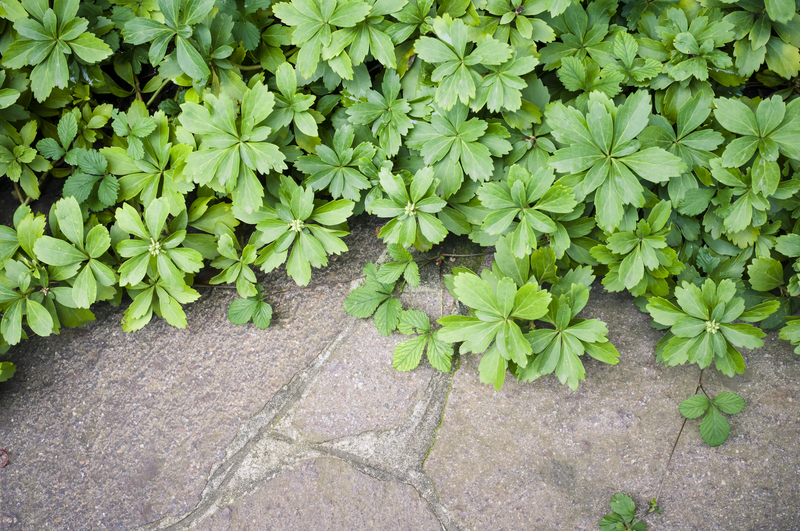Master the Art of Protecting Your Garden from Weather Hazards
Posted on 23/05/2025
Master the Art of Protecting Your Garden from Weather Hazards
Gardening is a passion for millions, yet every experienced gardener knows that a thriving garden faces more challenges than just weeds and pests. Extreme weather can wreak havoc on carefully cultivated plants, flowers, and vegetables in a matter of hours. Protecting your garden from weather hazards is not just a matter of luck--it's a skill any homeowner or gardening enthusiast can develop.
In this comprehensive guide, you'll master the art of safeguarding your beloved oasis from the unpredictability of Mother Nature.

Understanding Common Weather Hazards in the Garden
To successfully shield your garden from weather extremes, you must first recognize the threats most likely to impact your region. Here are the primary weather hazards gardeners confront:
- Frost and Freeze: Sudden drops in temperature can damage or kill tender plants overnight.
- Heavy Rainfall: Excess water can lead to root rot, soil erosion, and nutrient leaching.
- Drought and Heatwaves: Extended dry spells stress plants, reducing yields and weakening resistance to disease.
- High Winds: Powerful gusts can snap stems, uproot young plants, and scatter mulch.
- Hailstorms: These abrupt storms pummel foliage, flowers, and fruit, causing immediate and often severe damage.
- Snow and Ice: Winter weather can break branches, smother perennial beds, and delay spring growth.
Each hazard demands a unique set of strategies. The right preparation will not only decrease the risk of weather-induced loss but also create a more resilient landscape for seasons to come.
Planning Ahead: The First Line of Defense Against Weather Hazards
Long-term protection starts well before bad weather strikes. Smart garden design and plant choices provide a strong foundation for every other safety measure.
1. Choose Weather-Resistant Plants
- Opt for native species whenever possible; they are naturally adapted to local climate extremes.
- Research plant hardiness zones and match your selections accordingly.
- Incorporate drought-tolerant varieties in areas prone to heatwaves.
- For wind-exposed gardens, select sturdy, flexible woody shrubs.
- Mix deep- and shallow-rooted plants to stabilize the soil against flood and drought.
2. Strategic Garden Layout
Consider your garden's orientation, sun exposure, and elevation. By utilizing natural slopes for drainage or placing wind-sensitive plants in sheltered spots, you can reduce vulnerability to climate risks. Hedges, fences, or even rows of tall sunflowers can serve as natural windbreaks and snow fences.
3. Improve Soil Health
A healthy soil profile acts like a sponge, buffering plants from both drought (by holding moisture) and floods (by improving drainage).
- Regularly add organic matter (like compost or well-rotted manure).
- Mulch annually to suppress weeds, regulate temperature, and conserve water.
- Use cover crops to prevent erosion during the off-season.
Protective Measures for Frost, Freeze, and Cold Snaps
Frost protection is essential for most climates. Even in warmer regions, freak cold fronts can destroy sensitive annuals and vegetables.
Simple Solutions to Prevent Frost Damage
- Row covers: Lightweight fabric row covers provide insulation and allow sunlight while protecting against overnight chills.
- Cloche and cold frames: Reusable plastic or glass enclosures trap heat and shield young seedlings.
- Mulching: Apply a thick layer of straw, leaves, or bark around root zones to insulate soil temperatures.
- Watering: Moist soil absorbs and holds heat better than dry soil, reducing temperature swings.
- Bring potted plants indoors: Move movable containers to a garage or sheltered porch during forecasts of severe cold.
Advanced Cold Weather Protection Tactics
- Use portable heaters or heat lamps for high-value specimens (with caution).
- String outdoor lights (not LEDs) in trees--old-fashioned bulbs generate enough warmth to raise temps slightly.
- Plant on south-facing slopes where possible to maximize warmth from the low winter sun.
Safeguarding Your Garden from Excessive Rain and Flooding
While water is vital, an excess is disastrous. Garden water management prevents root rot, nutrient loss, and erosion.
Drainage and Soil Prep
- Raised beds: Elevate beds with loose, organic-rich soil to promote drainage.
- Swales and rain gardens: Design depressions or engineered beds to channel floodwaters away from delicate areas.
- Soil amendment: Add sand or gravel to heavy clay to enhance percolation.
- Regular mulching: Mulch slows surface runoff, helping soil absorb rainfall more evenly.
Protecting Against Erosion and Washout
- Install edging materials or terraces on slopes to keep soil in place.
- Plant groundcovers and spreading perennials that hold soil with strong root systems.
- After heavy rain, inspect for exposed roots and replenish mulch as needed.
Beating the Heat: Defending Gardens from Drought and Sun Stress
With summers becoming hotter and drier, heat-proofing your garden is more critical than ever.
Efficient Watering Techniques
- Drip irrigation: Delivers water directly to roots, minimizing evaporation.
- Deep watering: Water less often, but more thoroughly, to encourage deep root growth.
- Water early or late: Avoid midday when heat causes rapid evaporation.
Smart Mulching for Moisture Conservation
- Use organic mulches (like straw or wood chips) at least 2-3 inches deep.
- Consider living mulch--low growing, shade-giving companion plants that shade the soil.
Sun and Heat Barriers
- Install temporary shade cloth or floating row covers over sensitive crops during heat waves.
- Grow taller plants on the sunny side of your garden to provide natural shade for others.
Shielding Against Wind Damage
Intense winds can level a season's growth in one afternoon. To protect your green space from wind hazards, plan, build, and reinforce key defenses.
Creating Windbreaks
- Living windbreaks: Plant dense shrubs, trees, or tall perennial grasses to slow wind and reduce its force.
- Fences and trellises: Use semi-solid (not solid) structures which allow some air to pass through, minimizing turbulence and pressure build-up.
- For vegetable gardens, secure cages, trellises, or stakes around plants that need extra support.
Quick Fixes During High Wind Alerts
- Move patio pots, hanging baskets, and lightweight decor indoors.
- Use garden twine or fabric strips to gently tether taller flowers and vegetable stalks.
- Lay netting gently over beds to keep mulch and light debris in place.
Minimizing Hail and Storm Injury
Hailstones present one of the most acute physical dangers for gardens, especially during spring and summer storms.
Physical Barriers to Hail
- Place lightweight, rigid netting or screens above vulnerable crops.
- Erect temporary canopies, even old bedsheets draped over poles, at the first sign of hail in the forecast.
- For small gardens, consider constructing a permanent frame (using PVC pipes or wood) to support quick-deploy covers.
Recovery After Hailstorms
- Gently prune away damaged leaves and stems to prevent rot and disease.
- Fertilize lightly and water as needed to support recovery, avoiding overfeeding which stresses plants further.
- Keep an eye out for secondary fungal infections; treat promptly if symptoms arise.
How to Prepare for Snow and Ice Events
Snow can be both beneficial and burdensome: it insulates, but heavy accumulation can snap branches and flatten beds.
Snow Protection Essentials
- Staking: Provide support for young trees and top-heavy perennials.
- Brush off snow: Use a broom to gently remove snow from evergreens and shrubs before it freezes solid.
- Spread mulch thickly around perennials and expose crowns to prevent freeze-thaw damage.
Dealing with Ice
- Avoid using salt to melt ice near plantings--salt damages roots and alters soil chemistry.
- In severe freeze events, wrap trunks or cover susceptible plants with burlap to shield against temperature swings and sun scald.

Weather Monitoring and Emergency Readiness
Technology empowers today's gardeners to stay ahead of unpredictable weather:
- Install a weather station or download reliable apps for alerts on temperature drops, storms, or heatwaves.
- Keep frost covers, burlap, stakes, and extra mulch handy-- don't wait until a warning to track down supplies!
- Make a checklist for each season's typical hazards and review it monthly.
- Join local gardening groups or online forums for rapid updates and recovery tips during severe events.
Taking a Proactive Approach: Year-Round Garden Resilience
Mastering the art of protecting gardens from weather hazards is as much about preparation and prevention as it is about rapid response.
- Assess your garden's vulnerabilities every spring and autumn.
- Invest in quality materials for covers and supports--they'll repay you many times over.
- Stay observant and learn from each year's challenges to continually improve your defenses.
Ultimately, a resilient garden is a testament to a gardener's ingenuity and dedication. With these advanced weather protection tips, you're equipped to defend against anything nature throws your way--ensuring your garden not only survives but thrives year after year. Start planning today and make your green space weatherproof for tomorrow!


